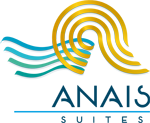CENTRAL HOTEL
BEACHES
- Chrissi Akti
- Agioi Apostoloi
- Kalamaki
- Nea Chora Beach
MUSEUMS
- Folklore Museum
- Byzantine Museum
- Naval Museum
- Museum traces Crete
WORTHSEEINGS
- Old harbor
- Public Garden Of Chania
- Yiali Tzamisi
- Metropolis Orthodox Church
- The church of Agios Nikolaos in Splantzia
- Firka Fortress
Ideal location in Chania
Chania (or Hania) is the second largest town in Crete with about 60,000 inhabitants. It is preserved more of its old character than any other town in Crete.
A beautiful and picturesque city with reminders of the past at every corner and the Venetian infuence clear. Hania is the capital of the Prefecture of Hania and it is the administrative, economical, communications and commercial center of the Prefecture. The bay of Suda that serves as the port of Hania, is the biggest and safest bay in the East Mediterranean and there is a daily ferry connection with Piraeus. The airport of Hania is located at Sternes, in Akrotiri, 14 km east of the town. Hania is connected by air to Athens and several countries from all over Europe through charter flights during the summer.
Useful distances
The beach of Chrissi Akti is located in the Municipal Unit of Nea Kydonia, only a few meters east of Agii Apostoli beach and 2,5 km west of Chania. It has been awarded Blue Flag and its name results from the golden sand of the beach. It constitutes an attraction for thousands of visitors every year, who visit this beach in order to swim in the crystal clear water that is not influenced by meltemi wind. The length of the beach is 500m. It is well organized, including sunbeds, umbrellas and changing room, as well as lifeguard. The beach is ideal for families with children because of the fine sand, the shallow water and the well organized playground.
The Folklore Museum of Chania is located at the centre of the old city of Chania, in Halidon Street, next to the Catholic church. It includes folklore and traditional exhibits that allow the visitor to have a representative picture of the way of life of older residents of island during the 18th and 19th century.
77 239Among others, in the museum is availabe a collection of tools, raw material of and products of traditional home handicraft, small industry and rural life. There are also representations of rural occupations, home arts, craft-based work as well as representations of the interior of a rural house. Interesting is the workshop of the museum that revives the Cretan embroidery art and where embroidery paintings are being created
This museum traces Crete’s centuries-old relationship with the sea, from the Minoans, through the Byzantine, Venetian, and Turkish periods, to arrive at the German invasion of the island during WWII. Spread over two floors, the collection includes video presentations, amazing models of ships, paintings, photos, and nautical equipment. You’ll find it at the western corner of the old harbor, in a lovely red building constructed by the Venetians and used as a prison. Note that at the Moro dock, in one of the Venetian arsenals east of the old harbor, you can also see the Minoa, a reconstructed 15th_century-BC Minoan ship.



